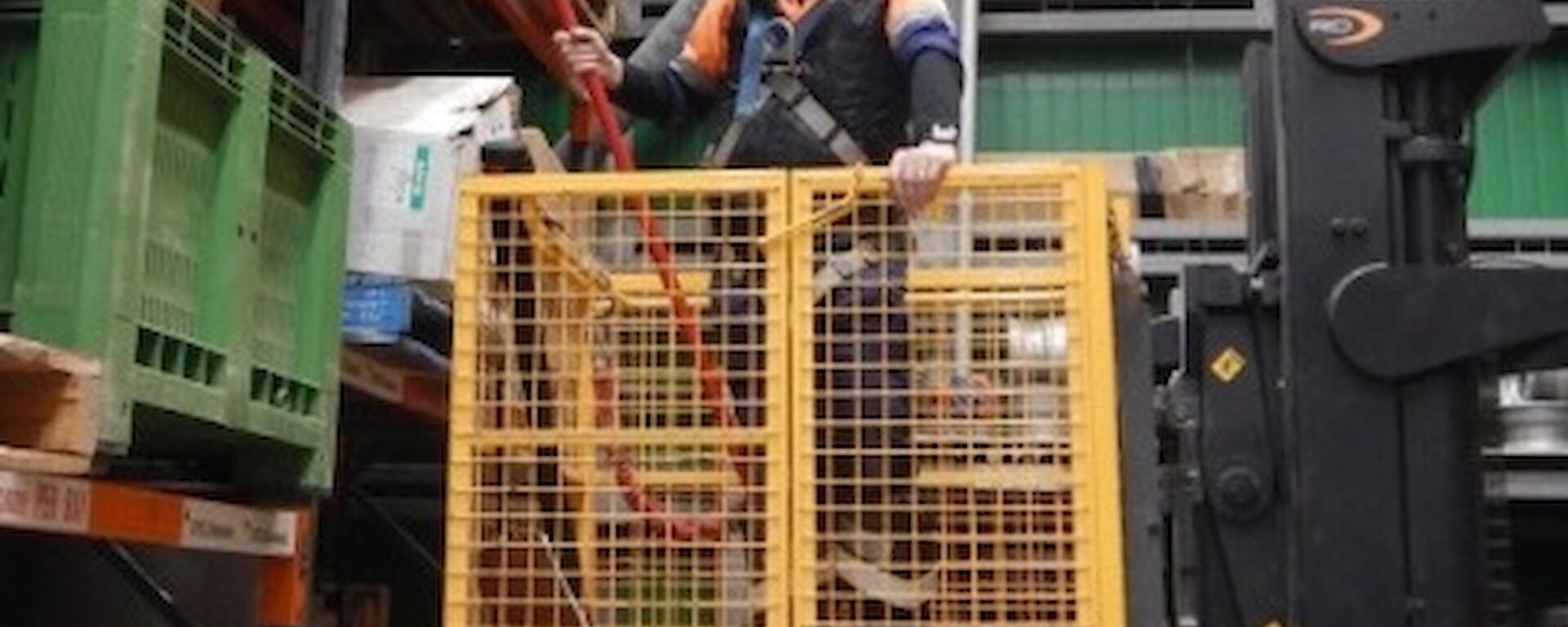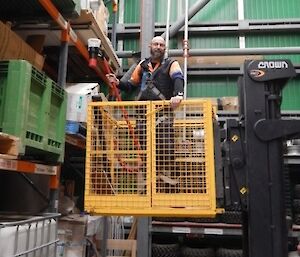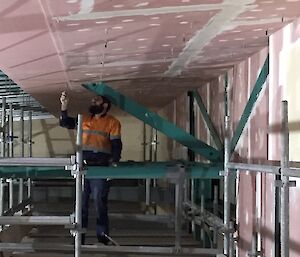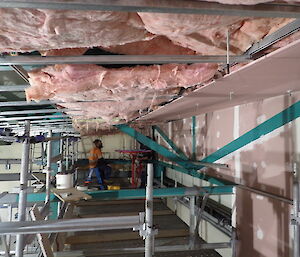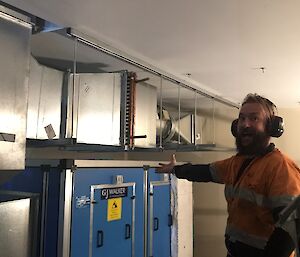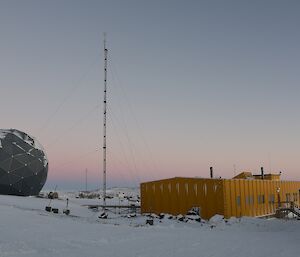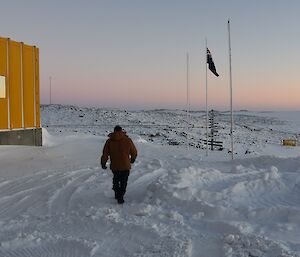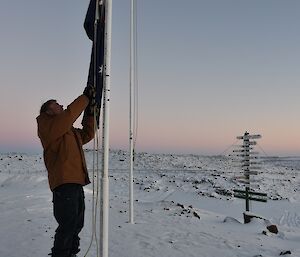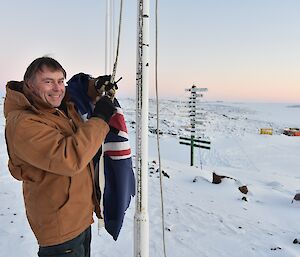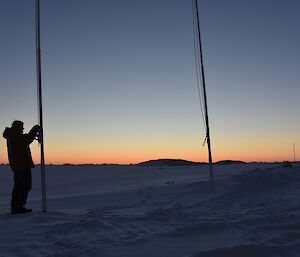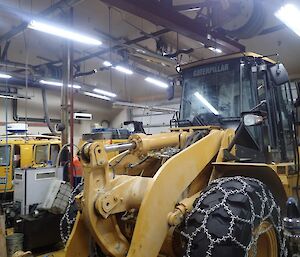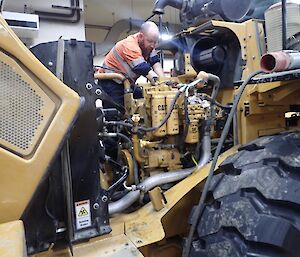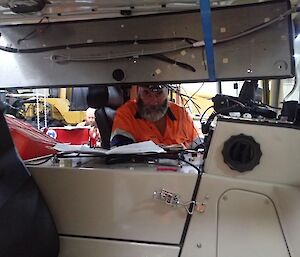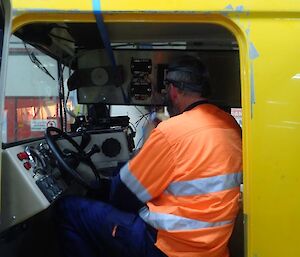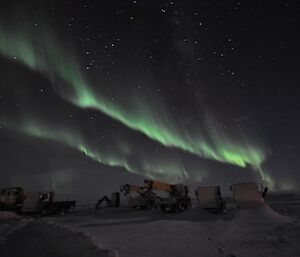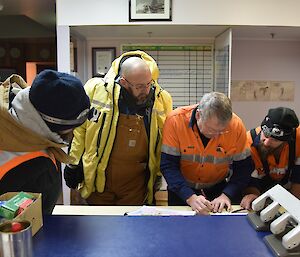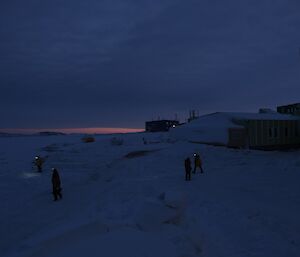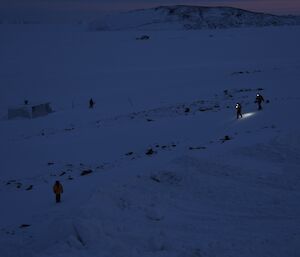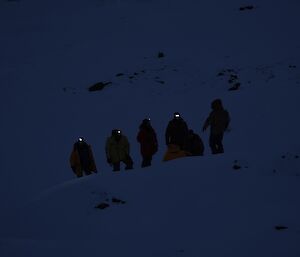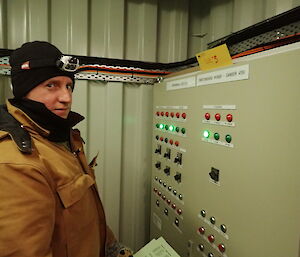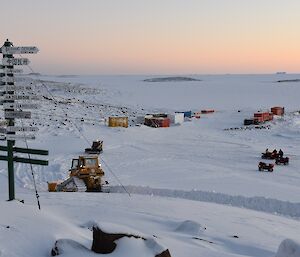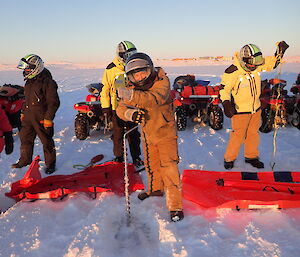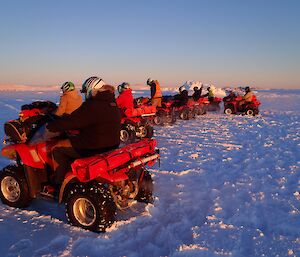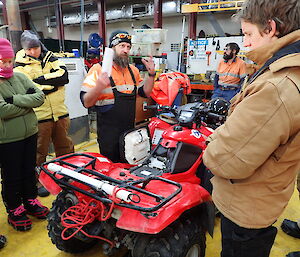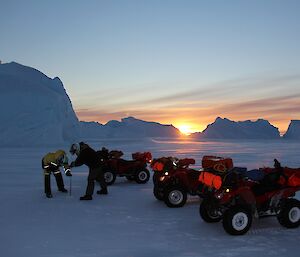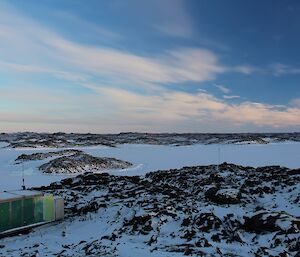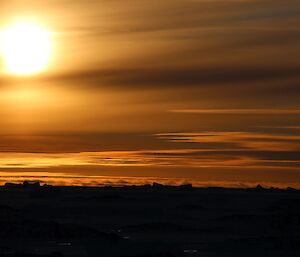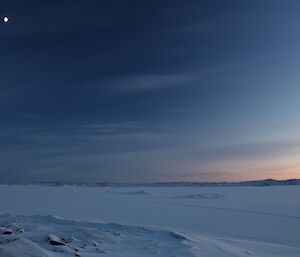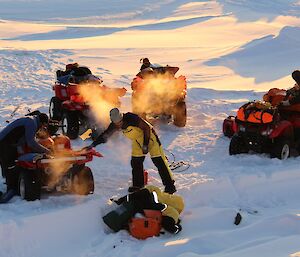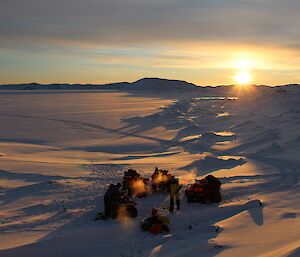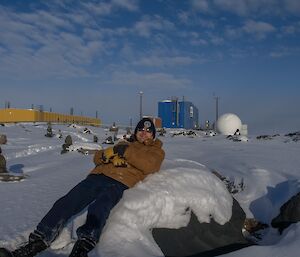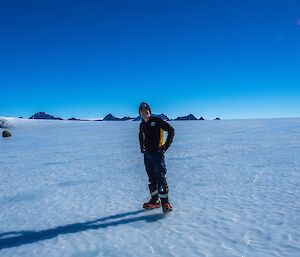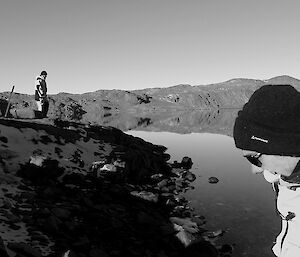Alex R, Bureau of Meteorology (BOM) Technician
Alex this your first trip to Antarctica and what lured you here?
It certainly is! Well, I boarded the P&O Aurora in Hobart thinking I was heading for a cruise of the Pacific Islands but I realised a little late that it was the white one, and not the red one, I was meant to get on. Joking aside, I have always had a goal of reaching Antarctica to experience living in such a remote and beautiful place with a small group of people. Antarctica is the next best thing for a rocket engineer who dreamed of stepping foot on Mars when he was a kid.
What is it like being a BOM tech here?
Despite the name, we don’t get a great deal of time handling high explosive. The Bureau of Meteorology has been a fantastic way to really see Antarctica. Of the many daily tasks required from a BOM tech, the observation of the weather forces me to step outside and really watch the way the climate and environment is continually changing down here. From launching balloons in roaring winds to repairing remote weather stations, I reckon it’s the best job I have ever had.
If not this job, what would you do Alex?
Once you have worked in Antarctica and caught ‘the bug’, it seems difficult to imagine yourself doing anything else.
You seem to have had a wide range of jobs in the past, what has been your favourite?
As an electrical engineer I have been lucky enough to have been involved in many interesting renewable energy projects and start-up companies over the years. I suppose, apart from the obvious cold-climate answer, my favourite past project was working on the construction of an algae biofuel refinery in Townsville. To this day, I am still learning from the immense challenges that presented themselves on that project.
Best experience in Antarctica so far?
Where to begin? My two day survival training to Brookes hut showed me the stark beauty of the Vestfold Hills. Following our walk we had a chance to sit on the ‘sundeck’ and kick back with a beer. Being the only humans around for miles, and at the bottom of the world, is an incredible feeling.
What do you love about Antarctica?
Aside from the amazing beauty and interesting wildlife, I would have to say that my number one love is the quiet. On a calm day, I just stand and stare at the scenery with not a sound to be heard. I find it gives a great sense of peace, especially when you have had years of jet setting and busy city life.
Who inspires you?
I suppose my father inspired me into science and IT in the early days, which has driven me into my current line of work. Over the last decade my true inspiration has come from my wife, who brought me out of my shell so many years ago and taught me a new way of life.
What have you learned living in a small community?
The three P’s. Patience, positivity and presents.
(Doc. Hmmm, I like the presents part of that!)
If you were a car, what car would you be?
Although I recently sold my Land Rover Defender, it summed me up in a nutshell. Small frame, a chassis that doesn’t rust but probably the car with the most maintenance requirements you will ever own! It will get you through some of the toughest and most extreme environments, but when you need it to start in a shopping mall car park, the ignition dies.
(Doc. As a fellow unfortunate Land Rover owner, I know exactly where you are coming from Alex.)
What is the ‘must have’ item that you packed for Antarctica?
Ninja IceI took someone’s advice back in Hobart (Tasmania), who said to me: “Finish packing and then take out half of what you have and leave it behind”. I packed light, but I brought a short list of essentials. Among them, I have found my ten pairs of Ninja Ice gloves to be the perfect balance between dexterity and warmth. I am very glad I packed them!
If you could be someone else, who would it be?
I have always believed that we are who we make ourselves to be. So, despite many years of hard lessons, I wouldn’t want to be anyone else but me. Well, maybe the front man in Dr Teeth and the Electric Mayhem.
(Doc. Great band Alex. I always really loved Animal on the drums.)
What is in store when you return to home?
I am lucky enough to be a father of three beautiful daughters, so I plan to return to my regular Dad duties and find a new job. This trip to Antarctica has taken my career in a different direction, so I will just have to see what new opportunities present themselves upon return to Hobart.
Great interview Alex, thank you so much for your thoughts and reflections. I would enjoy the peace and tranquillity while you can with three girls waiting at home.

